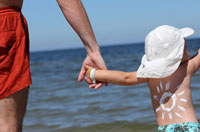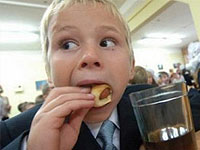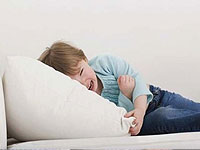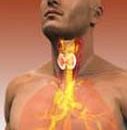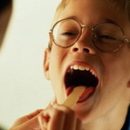Features of fractures in children are manifested by the elasticity of children's bone tissue, the strength of the periosteum and the presence of a spike zone. Fracture of the elbow joint in children and ankle fracture - one of the most common injuries.
Content
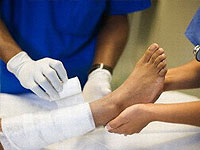 At any age, no one is immune from troubles, injuries and troubles, children with their activity, mobility and vigorous acquaintances are not familiar with it. Fractures in kids — The phenomenon is quite frequent, due to the peculiarities of their behavior in everyday life, in the courtyard, on the street and on the road. Falling from a bike or from a children's slide, unsuccessful exercise on a sports projectile, an awkward jump and landing on a basketball court, an inappropriate and imperfect maneuver at a pedestrian crossing — All these actions can lead to fractures of varying severity and complexity. The elasticity of children's bones is provided by fewer mineral salts compared to the bones of adults, as well as an assault, a peculiar case around bones, which, due to anatomical features, prevents the occurrence of fractures and provides bones of certain flexibility and protection. Therefore, for children are typical of age damage such as dorms, substalumny fractures and epiphisheolysis.
At any age, no one is immune from troubles, injuries and troubles, children with their activity, mobility and vigorous acquaintances are not familiar with it. Fractures in kids — The phenomenon is quite frequent, due to the peculiarities of their behavior in everyday life, in the courtyard, on the street and on the road. Falling from a bike or from a children's slide, unsuccessful exercise on a sports projectile, an awkward jump and landing on a basketball court, an inappropriate and imperfect maneuver at a pedestrian crossing — All these actions can lead to fractures of varying severity and complexity. The elasticity of children's bones is provided by fewer mineral salts compared to the bones of adults, as well as an assault, a peculiar case around bones, which, due to anatomical features, prevents the occurrence of fractures and provides bones of certain flexibility and protection. Therefore, for children are typical of age damage such as dorms, substalumny fractures and epiphisheolysis.
To the peculiarities of fractures in children can be attributed:
- Fracture by type so-called «Green twig», similar to a bent, but not broken branch, with such injury there are no bone fragments, the bone breaks only on one side, and bone fragments are held by the fatty periosteum;
- The fracture line is usually in the zone of bone tissue growth, when it is possible to form curvature or shortening;
- Fractures arise in the places of muscle attachment;
- The rapid growth of bone tissues in children is due to good blood supply to the periosteum;
- Ability to independently correct bone bone fragments.
Types of bone fractures in children
Traumatic fractures arising from mechanical exposure and pathological — With certain painful processes, they can be closed, while maintaining the integrity of the skin, and open — wound and bleeding. In the direction of fractures there may be longitudinal, oblique, transverse, screw, star, as well as isolated, combined and multiple.
According to the statistic, the fractures of the elbow joint in children are given a significant place, it is explained by the fact that falling, the child will put his hand for self-defense, trying to weaken the blow. Among all intra-articular fractures — This species is found in 20% of cases. Basic symptoms — Sharp pain in the area of affected joint, forearm, ray-taking joint and even fingers. Sometimes there is a limitation of movements and mobility of the joint, accompanied by edema due to the accumulation of fluid or blood on the rear surface of the elbow, which leads to the development of hemarozosis. A manual reposition is possible before the imposition of gypsum to restore an anatomical structure with further fixation of the elbow joint by applying plaster lumps for up to 4 weeks.
Ankle fracture in a child
One of the most frequent fractures of the lower extremities is the fracture of the ankle. The reasons for the ankle fracture in a child can become an unsuccessful landing when jumping from a height, drop, sharp unexpected movements. With direct impact there is a single fracture of the ankle, when combined with a fracture and dislocation — Fracturevich. The peculiarity of this injury is that the direction of the junction of the joint indirectly indicates a fracture. If the stop is turned outward — There is a fracture of the inner ankle, the stop is turned inside — Outdoor ankle. Symptoms can manifest itself in some cases only after 24 or more hours when the edema reaches its maximum sizes. Acute pain violates moves and indicates a fracture or bundle break. The first events aimed at reducing edema and bleeding is fixing the damaged ankle in the highlight and the provision of cold in the area of damage, the use of elastic bandage. The treatment is carried out under the supervision of an orthopedic specialist and a surgeon can occur in 3 directions:
- plaster imposition;
- skeletal extract and plaster imposition;
- Operational intervention and plastering.
Adequate therapy and fulfillment of all the recommendations of the doctor will ensure the complete restoration of the ankle joint.



